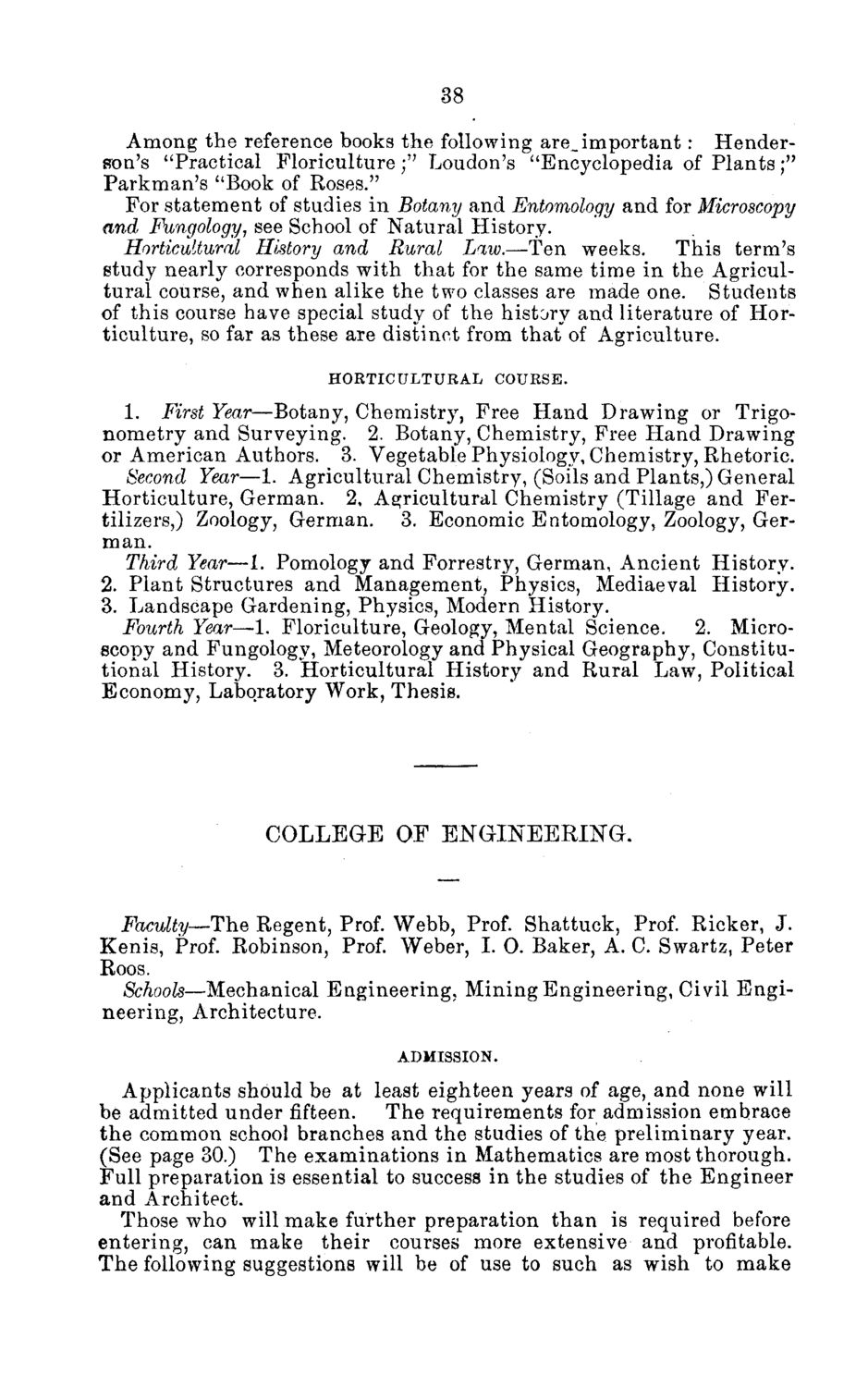| |
| |
Caption: Board of Trustees Minutes - 1876
This is a reduced-resolution page image for fast online browsing.

EXTRACTED TEXT FROM PAGE:
38 Among the reference books the following are^important: Henderson's "Practical Floriculture;" Loudon's "Encyclopedia of Plants;" Parkman's "Book of Roses." For statement of studies in Botany and Entomology and for Microscopy and Fungology, see School of Natural History. Horticultural History and Rural Law.—Ten weeks. This term's study nearly corresponds with that for the same time in the Agricultural course, and when alike the two classes are made one. Students of this course have special study of the history and literature of Horticulture, so far as these are distinct from that of Agriculture. HORTICULTURAL COURSE. 1. First Year—Botany, Chemistry, Free Hand Drawing or Trigonometry and Surveying. 2. Botany, Chemistry, Free Hand Drawing or American Authors. 3. Vegetable Physiology, Chemistry, Rhetoric. Second Year—1. Agricultural Chemistry, (Soils and Plants,) General Horticulture, German. 2, Agricultural Chemistry (Tillage and Fertilizers,) Zoology, German. 3. Economic Entomology, Zoology, German. Third Year—1. Pomology and Forrestry, German, Ancient History. 2. Plant Structures and Management, Physics, Mediaeval History. 3. Landscape Gardening, Physics, Modern 'History. Fourth Year—1. Floriculture, Geology, Mental Science. 2. Microscopy and Fungology, Meteorology and Physical Geography, Constitutional History. 3. Horticultural History and Rural Law, Political Economy, Laboratory Work, Thesis. COLLEGE OF E N G I N E E R I N G . Faculty—The Regent, Prof. Webb, Prof. Shattuck, Prof. Ricker, J. Kenis, Prof. Robinson, Prof. Weber, I. 0. Baker, A. C. Swartz, Peter Roos. Schools—Mechanical Engineering, Mining Engineering, Civil Engineering, Architecture. ADMISSION. Applicants should be at least eighteen years of age, and none will be admitted under fifteen. The requirements for admission embrace the common school branches and the studies of the preliminary year. (See page 30.) The examinations in Mathematics are most thorough. Full preparation is essential to success in the studies of the Engineer and Architect. Those who will make further preparation than is required before entering, can make their courses more extensive and profitable. The following suggestions will be of use to such as wish to make
| |